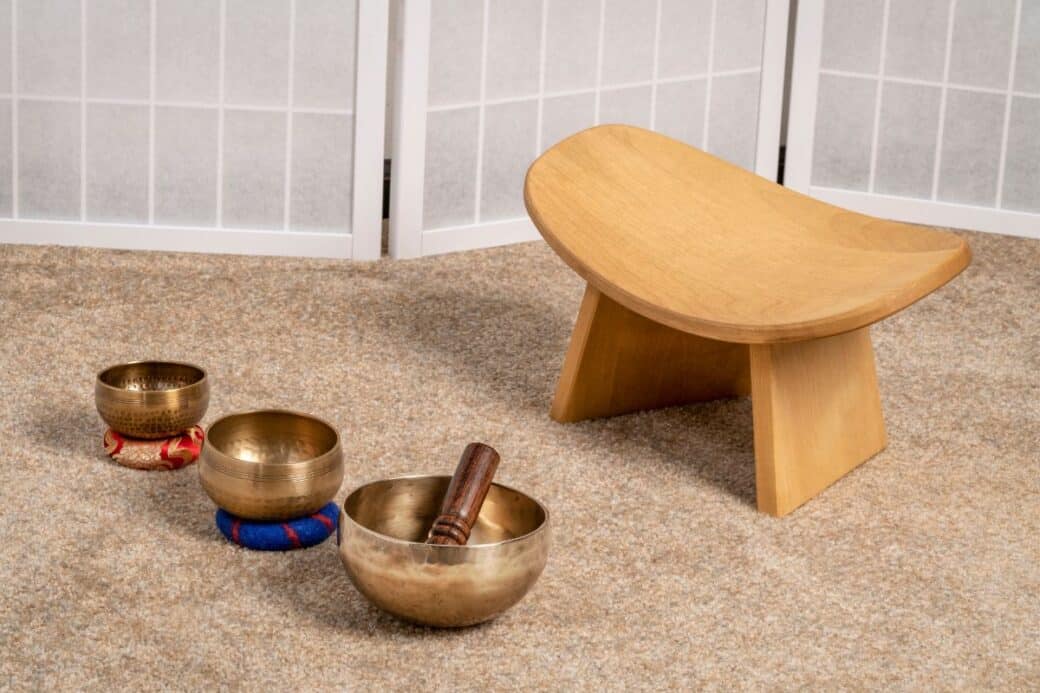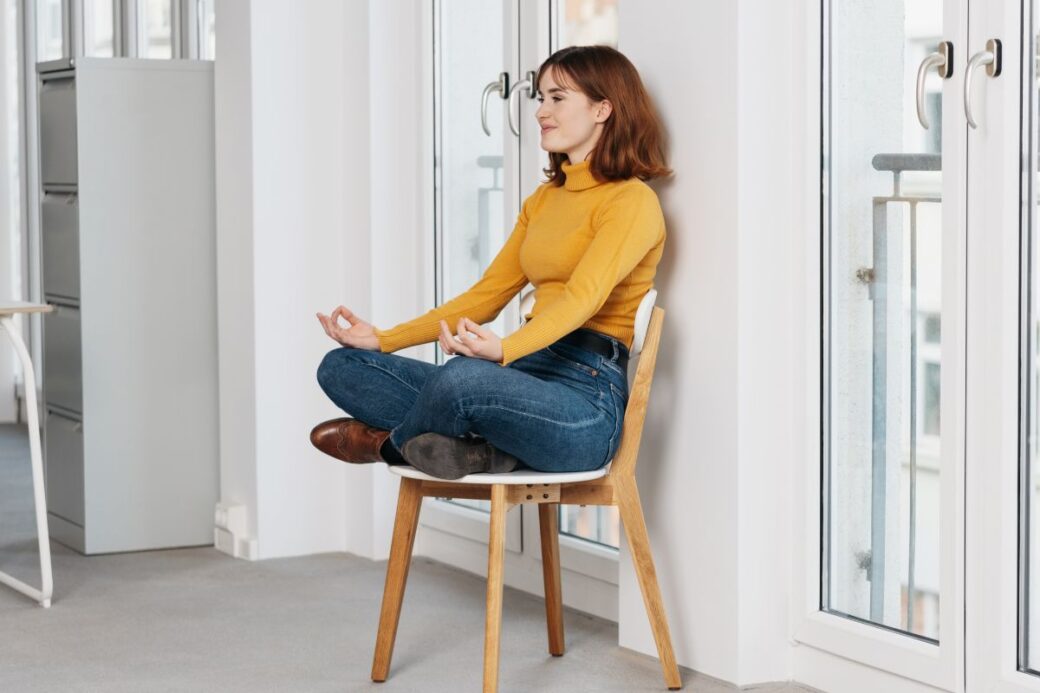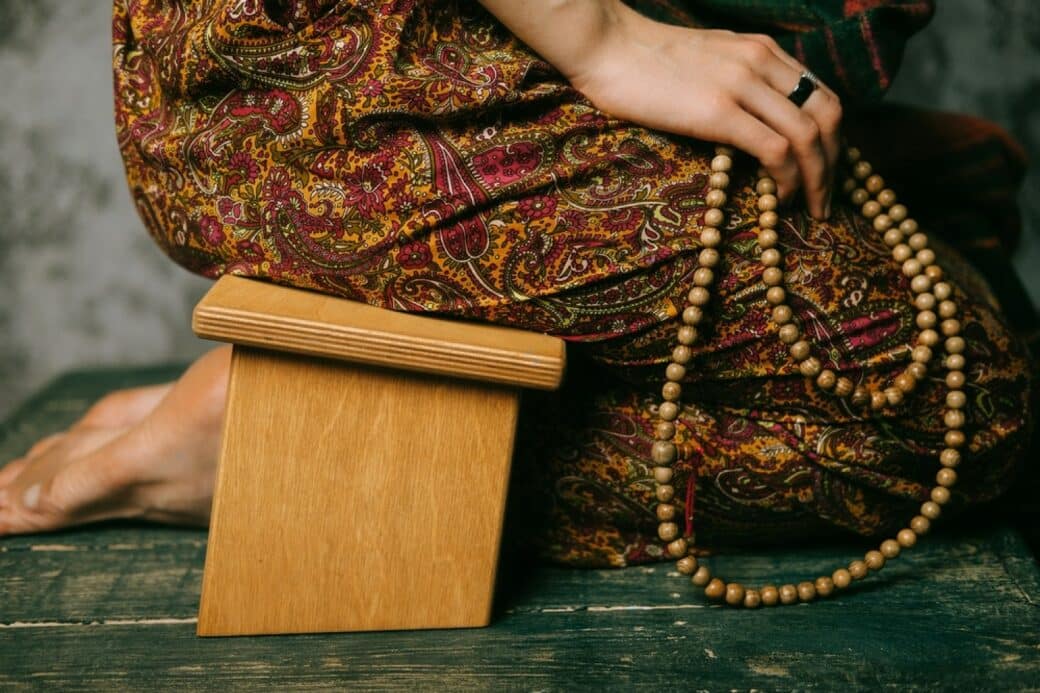If you’ve ever struggled to find a comfortable position while meditating, fret no more. In this article, we will guide you on how to sit on a meditation bench with ease and grace. From the correct posture to aligning your body and finding the right balance, we’ll share all the tips and tricks to help you master your position on a meditation bench. So, get ready to enter a state of tranquility and find your zen like never before.

How To Sit On A Meditation Bench: Understanding the Importance of Proper Positioning
Connection between posture and meditation effectiveness
When it comes to meditation, proper positioning plays a crucial role in enhancing the effectiveness of your practice. The way you sit affects your ability to focus, concentrate, and maintain a sense of calm during your meditation sessions. By understanding the connection between posture and meditation effectiveness, you can optimize your practice and deepen your mindfulness.
Impacts of improper positioning on physical health
Not only does improper positioning hinder the effectiveness of your meditation practice, but it can also have negative impacts on your physical health. Sitting in a slouched or hunched position can lead to muscle strain, back pain, and discomfort. Over time, these physical issues can significantly interfere with your ability to meditate comfortably and maintain a consistent practice. By prioritizing proper positioning, you can minimize the risk of physical ailments and establish a solid foundation for your meditation practice.
Building mindfulness through proper posture
Proper posture is not just about maintaining a physically aligned position; it is also a gateway to building mindfulness. When you sit upright with a straight spine, your body is more alert, and your mind is naturally more focused. The alignment of your body translates into the alignment of your mind, promoting a greater sense of presence and awareness. By cultivating mindfulness through proper posture, you can cultivate a deeper connection with yourself and experience the transformative benefits of meditation.
Choosing the Right Meditation Bench

Factors to consider when selecting a bench
Selecting the right meditation bench is essential for creating a comfortable and supportive meditation experience. There are several factors to consider when choosing a bench. First and foremost, consider the materials used and the overall build quality of the bench. Ensure that it is sturdy, durable, and capable of supporting your body weight. Additionally, consider the portability of the bench if you plan to use it in multiple locations.
Advantages of adjustable benches
Adjustable meditation benches offer a great degree of versatility and customization. These benches typically have various height settings that allow you to find the most comfortable sitting position for your body. Adjustable benches are particularly useful if you have specific physical needs or if you prefer to switch between different meditation postures. By opting for an adjustable bench, you can adapt your seating position to accommodate your unique preferences and requirements.
Appropriate bench size and height relative to body dimensions
To ensure optimal comfort and support, it is crucial to choose a meditation bench that is appropriate in size and height relative to your body dimensions. The bench should allow your knees to comfortably touch the ground while maintaining a natural alignment of your spine. Consider your height, leg length, and flexibility when selecting the bench size. A bench that is too small or too large may lead to discomfort and hinder your ability to maintain proper posture during meditation.
Preparing for Meditation
Creating a conducive environment for meditation
Before diving into your meditation practice, it is important to create a conducive environment that promotes relaxation and focus. Find a quiet and peaceful space where you can minimize distractions. Dim the lights or use soft lighting to create a soothing atmosphere. Consider using candles, incense, or essential oils to enhance the sensory experience. Creating a dedicated meditation space helps signal to your mind and body that it is time to enter a state of tranquility and inner reflection.
Deciding on the duration of the meditation session
The duration of your meditation session is a personal choice and can vary depending on your experience and available time. Start with shorter sessions if you are new to meditation and gradually increase the duration as you become more comfortable. It is better to have shorter but consistent daily sessions than infrequent longer sessions. Set a timer to avoid constantly checking the clock during your meditation and allow yourself to fully immerse in the practice.
Doing some stretching exercises before meditation
Stretching before meditation can help prepare your body for the sitting posture and promote relaxation. Gentle stretching exercises, such as neck rolls, shoulder rolls, and gentle twists, can help release tension and loosen any tight muscles. Additionally, incorporating deep breathing exercises into your stretching routine can help calm the mind and establish a sense of grounding before entering into your meditation practice.
Adopting an Appropriate Sitting Posture
The correct alignment of the spine during meditation
During meditation, it is important to maintain a correct alignment of the spine to support your physical well-being and overall meditation experience. Imagine a straight line extending from the base of your spine all the way up to the crown of your head. Sit with your back straight, but not overly rigid, allowing for a natural curve in your lower back. Avoid slouching or leaning forward, as this can lead to discomfort and interfere with your ability to focus.
The placement of the feet
When sitting on a meditation bench, the placement of your feet is crucial for maintaining stability and balance. Rest your feet comfortably on the ground, with your heels firmly grounded and your toes relaxed. If needed, you can adjust the distance between your feet to find the most stable and supportive position. The goal is to maintain a solid foundation that allows you to sit with ease and stability throughout your meditation practice.
The positioning of the hands and arms
There are various hand positions, also known as mudras, that you can adopt during meditation. The most common hand position is to rest your hands gently on your lap, palms facing upward, and allowing your thumbs to lightly touch your index fingers. This position promotes a sense of openness and receptivity. Alternatively, you can adopt the cosmic mudra by placing your hands on your knees, with your palms facing downward. Experiment with different hand positions to find the one that feels most natural and comfortable for you.
The orientation of the head and neck
To maintain proper posture during meditation, ensure that your head and neck are aligned with your spine. Your chin should be slightly tucked in, and the crown of your head should be pointing toward the ceiling. Avoid tilting your head forward or backward, as this can strain the neck muscles and lead to discomfort. Keep your facial muscles relaxed, allowing for a soft gaze or closing your eyes if that feels more comfortable.
Understanding Different Seiza Positions
Introduction to Seiza
Seiza is a traditional meditation posture that originated in Japan. Although it may initially feel unfamiliar to those accustomed to sitting on chairs or cushions, seiza has several benefits and can offer a stable and grounded meditation experience. In seiza, you sit on your knees with your legs folded underneath you and your buttocks resting on your heels. This position promotes an open and attentive posture, allowing for deeper focus and concentration.
Finding comfort in Seiza position
When practicing seiza, it is important to find comfort and ease in the position. Start by kneeling on a cushion or folded blanket to provide support and cushioning for your knees and ankles. Gradually work on gradually increasing the duration of your seiza practice to build endurance and comfort. Experiment with different sitting heights and the use of additional props, such as a meditation bench, to find the configuration that best suits your body and preferences.
Transitioning into Seiza from other positions
If you are transitioning into seiza from a different sitting position, it may take some time for your body to adjust. Begin by practicing seiza for short durations and gradually increase the time as your body becomes more accustomed to the posture. Incorporating stretching exercises and gentle knee and hip opening exercises before your meditation session can also help prepare your body for seiza. Be patient with yourself as you make the transition, and listen to your body’s cues to avoid any discomfort or strain.
Exploring Other Meditation Positions
The Lotus position
The lotus position, also known as Padmasana, is a classic meditation pose that has been practiced for centuries. In this position, you cross your legs and place each foot on the opposite thigh. The lotus position offers a stable base and promotes a straight spine, facilitating deep concentration and a sense of grounding. However, it requires a high degree of flexibility in the hips and knees. If you are not comfortable in the full lotus position, you can opt for a half-lotus position or a modified cross-legged position.
The Burmese position
The Burmese position is a more accessible alternative to the lotus position. In this position, you sit cross-legged with both feet on the floor. The key is to maintain a straight spine and allow your knees to comfortably touch the ground. You can use a cushion or folded blanket for added support or to elevate your hips if needed. The Burmese position provides a stable and comfortable sitting posture that is suitable for beginners or individuals with limited flexibility.
The Half-Lotus position
The half-lotus position is another variation of the lotus pose that offers a balanced combination of stability and ease. In the half-lotus position, you place one foot on the opposite thigh and allow the other foot to rest comfortably on the floor. This position is a great option for those who may not have the flexibility for the full lotus position but still want to experience the benefits of a balanced and grounded meditation posture.
Breathing Techniques While Meditating
Deep breathing and relaxation
Deep breathing is a fundamental aspect of meditation and plays a vital role in promoting relaxation and tranquility. As you settle into your meditation posture, bring your awareness to your breath. Take slow, deep breaths, allowing your belly to expand on the inhale and gently contract on the exhale. By consciously focusing on your breath, you can calm the mind, release tension, and create a sense of inner space and peace.
Nasal breath versus mouth breath
During meditation, it is generally recommended to breathe through the nose rather than the mouth. Breathing through the nose helps filter and warm the air, facilitating a smoother and more controlled breath. Nasal breathing also activates the parasympathetic nervous system, reducing stress and promoting relaxation. However, if you have difficulty breathing through your nose, or if it feels uncomfortable, it is perfectly acceptable to use a gentle mouth breath. The goal is to find a breathing pattern that feels natural and supportive for your body.
The role of breathing in focus and concentration
Conscious control of your breath can significantly enhance your focus and concentration during meditation. By directing your attention to the breath, you anchor your mind in the present moment and create a point of focus. As thoughts or distractions arise, gently guide your awareness back to the sensation of the breath entering and leaving your body. The rhythm and depth of your breath can serve as a steady anchor, allowing you to cultivate a greater sense of mental clarity and centeredness.
Maintaining the Meditation Posture
Periodically checking and adjusting your posture
During longer meditation sessions, it is important to periodically check and adjust your posture to ensure that you are maintaining proper alignment. Take a moment to bring your awareness to your body and notice any areas of tension or discomfort. Make any necessary adjustments, such as straightening your back, relaxing your shoulders, or readjusting your legs. By periodically checking and adjusting your posture, you can sustain your meditation practice with greater comfort and ease.
Managing discomfort and pain
Discomfort and pain may arise during meditation, especially when sitting for extended periods. When discomfort arises, take a moment to investigate its source and explore ways to alleviate it. Adjust your position, use cushions or props to provide support, or transition into a different sitting posture if needed. Additionally, incorporating regular breaks or incorporating gentle movement, such as stretching or walking, can help alleviate discomfort and restore circulation.
Building endurance for long meditation sessions
Building endurance for longer meditation sessions requires consistent practice and gradually increasing the duration of your sessions. Start with shorter meditation sessions and gradually increase the time as your body and mind adapt. By consistently challenging yourself to sit for longer periods, you can gradually build endurance and strengthen your ability to maintain the meditation posture with ease and comfort. Be patient with yourself and listen to your body’s cues to avoid overexertion or strain.
Modifying the Position for Those with Physical Restrictions
Adjustments for individuals with back issues
Individuals with back issues, such as lower back pain or herniated discs, may need to modify their meditation position to avoid exacerbating their condition. In such cases, sitting on a cushion or folded blanket to elevate the hips can help reduce strain on the lower back. Additionally, using a meditation bench with back support or opting for a chair with a straight back can provide extra support for individuals with back issues. It is important to prioritize comfort and listen to your body’s needs when adapting your meditation posture.
Modifications for those with knee or hip problems
For individuals with knee or hip problems, finding a comfortable meditation position can be challenging. Using cushions or folded blankets to elevate the hips and provide support can help alleviate pressure on the knees and hips. Alternatively, opting for a chair or a meditation bench with adjustable height can allow for a more comfortable sitting position. Experiment with different props and sitting configurations to find the one that offers the most support and relieves any discomfort in the knees or hips.
Maximizing the Benefits of Meditation Bench
Incorporating the meditation bench into daily routine
Incorporating a meditation bench into your daily routine can significantly enhance your meditation practice. The bench provides a comfortable and supportive seating option that promotes proper posture and alignment. By ensuring that your body is positioned optimally, you can deepen your focus and concentration, allowing for a more profound meditation experience. Find a dedicated space for your meditation bench, making it easily accessible for daily use and integrating it seamlessly into your meditation routine.
Maintaining your meditation bench
To ensure the longevity and functionality of your meditation bench, it is important to maintain it properly. Regularly clean the bench using a soft cloth or brush to remove any dust or debris. If your bench requires oiling or conditioning, use a natural wood polish or oil specifically designed for furniture. Store the bench in a dry and protected area to avoid moisture damage. By taking care of your meditation bench, you can continue to enjoy its benefits for years to come.
Pairing your meditation bench with other meditation tools and accessories
To create a complete meditation space, consider pairing your meditation bench with other tools and accessories. Meditation cushions or zabutons can provide additional support and cushioning for your knees and ankles. Incense burners, candles, or natural elements like plants can enhance the ambiance of your meditation space. Consider incorporating objects of personal significance, such as photos or mementos, to further personalize your meditation area. Experiment with different combinations to create an environment that resonates with your unique preferences and promotes a sense of calm and tranquility.
In conclusion, proper positioning is an essential aspect of a successful meditation practice. Understanding the connection between posture and meditation effectiveness, choosing the right meditation bench, preparing your body and environment for meditation, adopting an appropriate sitting posture, exploring various meditation positions, practicing breathing techniques, maintaining the meditation posture, and making modifications for physical restrictions are all key components in mastering your position during meditation. By paying attention to your posture and incorporating these practices into your routine, you can enhance your meditation experience, cultivate mindfulness, and reap the transformative benefits of a regular meditation practice.




